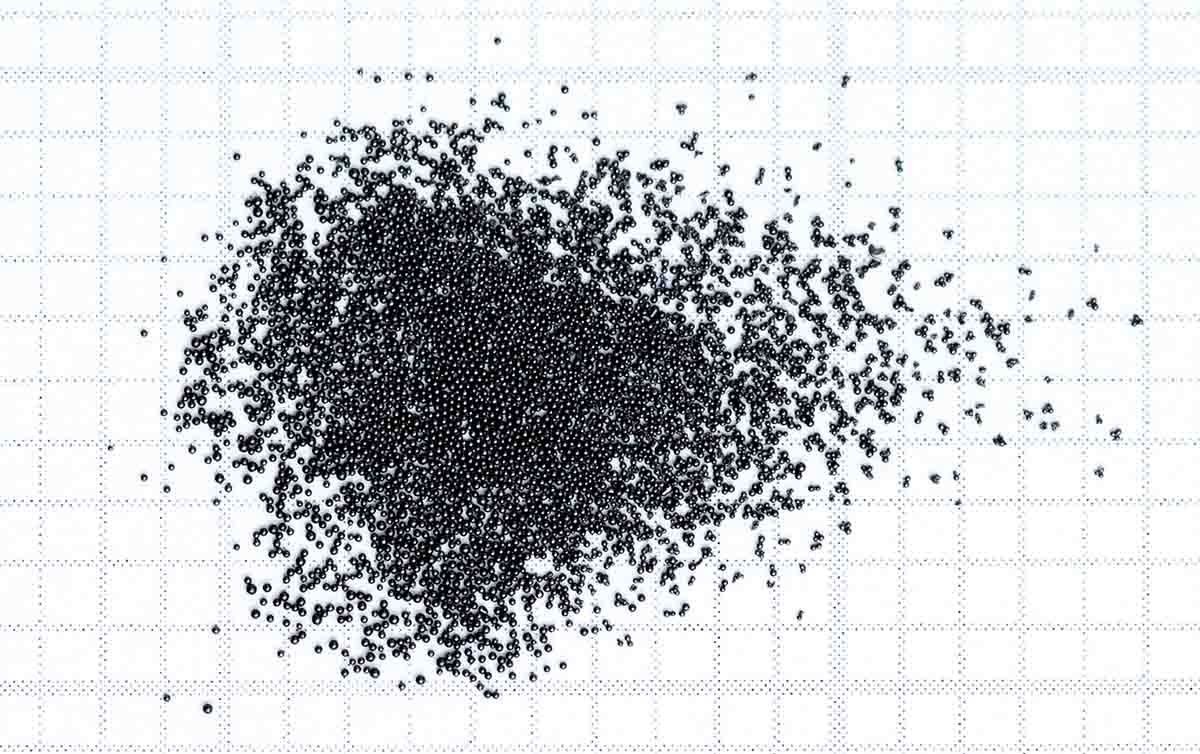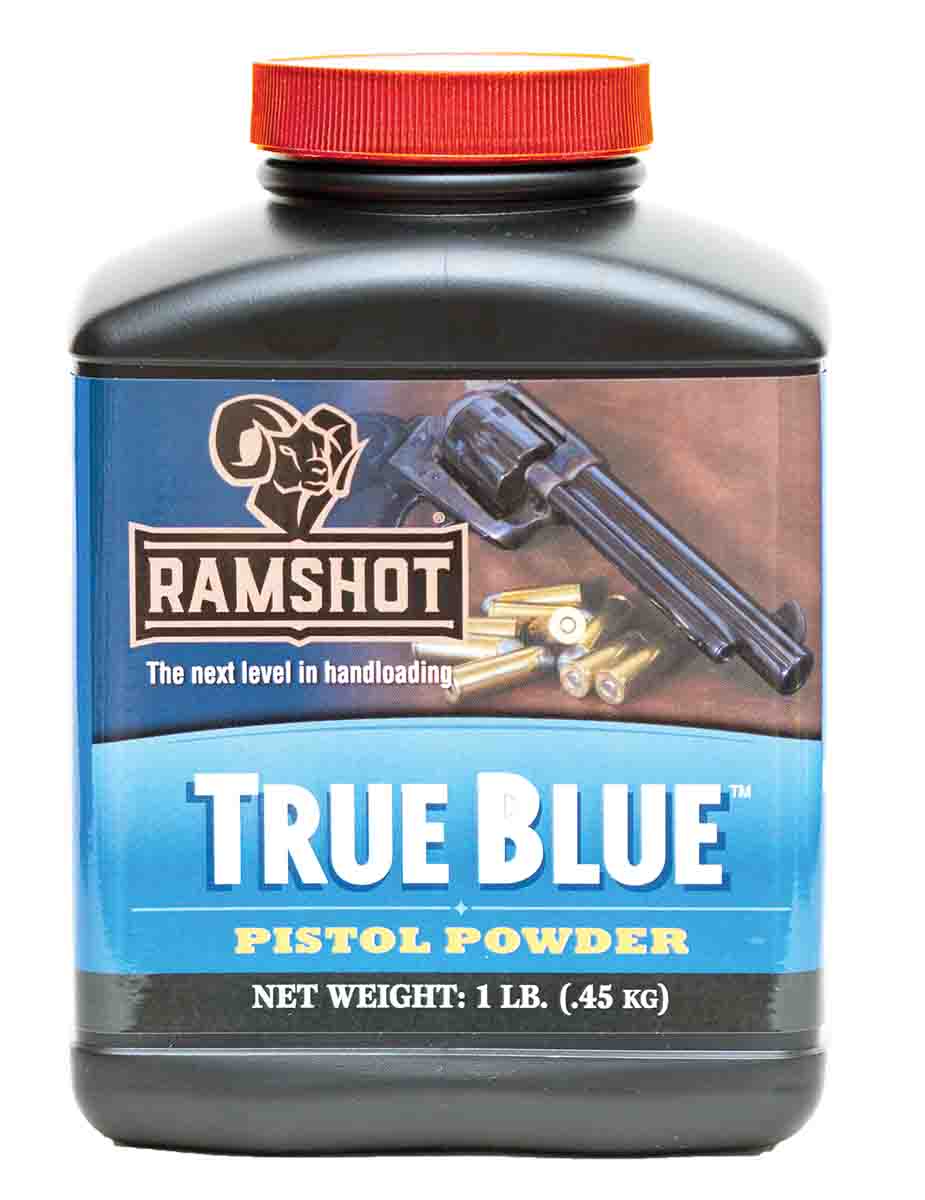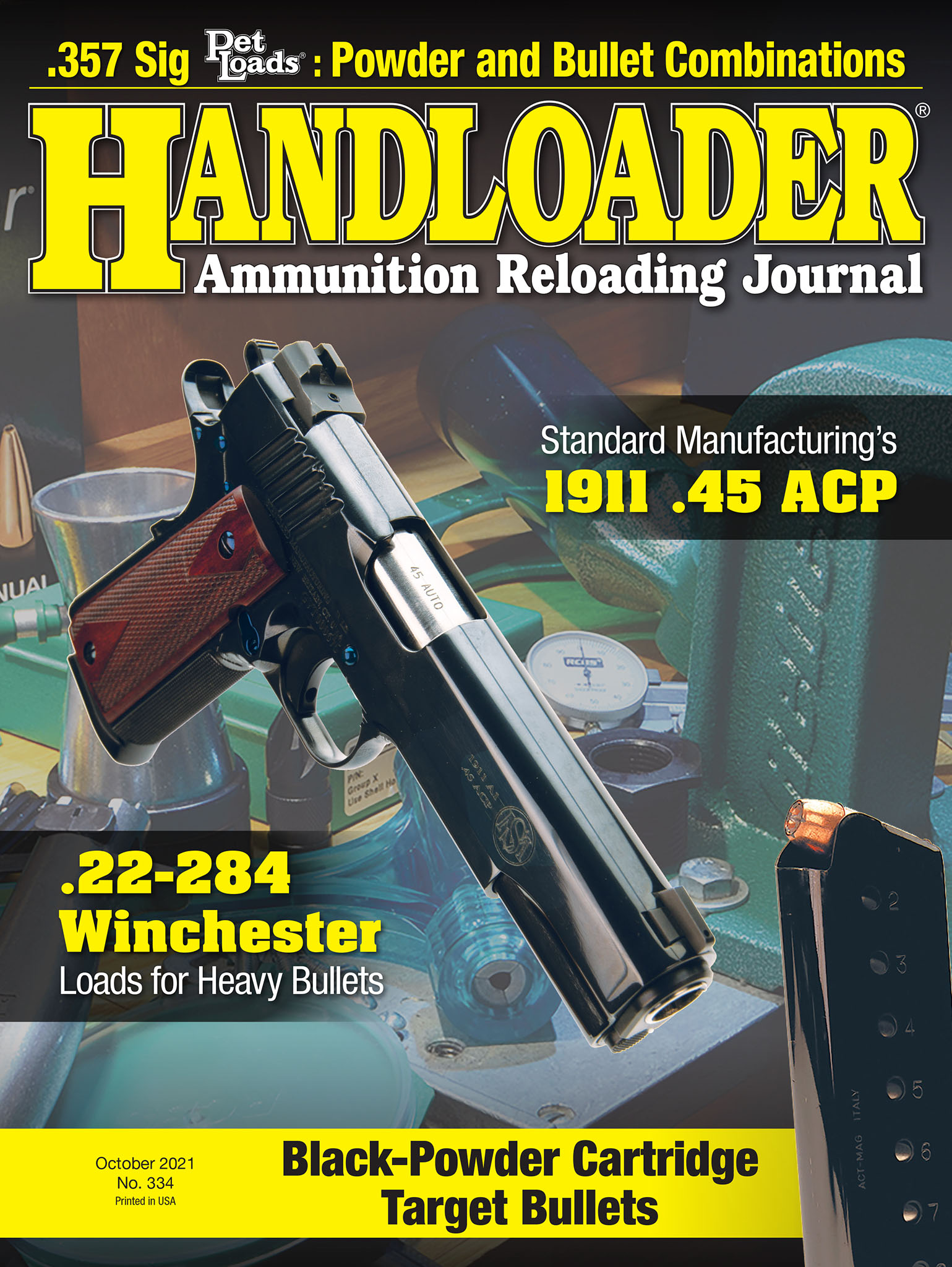Propellant Profiles
Ramshot True Blue
column By: Randy Bimson | October, 21


Like a lot of the Handloader readership, I have a penchant for wheel-guns. Now don’t get me wrong, I love my self-loading pistols, but there is just something about having your fired cases dropped ever so politely into your open hand. Whether it be my Smith & Wesson (S&W) Model 60 Chiefs Special snubby or my old Ruger Flattop Blackhawk .44 Magnum single action, I always enjoy my time spent with a good wheel-gun in hand.
Owning a selection of wheel-guns usually introduces the shooter to what might be called the “classic cartridges” like the .38 Special, .44 Special, .45 Colt and the .455 Webley, also known North of the 49th Parallel as the .455 Colt.
During a recent session at the load bench cranking out ammunition for a host of my classic caliber wheel-guns, I noticed there were three powders typically spoken of in high regard for assembling what we might call general purpose loads for these guns, Bullseye, Winchester 231, also known as Hodgdon HP-38, and Unique. In my powder cabinet, there is another powder that I use a lot, but which I don’t hear as much chatter about among shooters/handloaders as I should, and that is Ramshot True Blue.
Having lived through all of the ammunition/reloading component famines of the past half-century, I have gone to lengths to ensure that I have a couple of loads for the same application based on different components, like powders, so that if one key component is not available, I well may have the components to build the other favorite load. True Blue is one of the versatile propellants to have on hand. Not only for creating loads for classic wheel-gun cartridges, but as I have also found, it is outstanding for working up favorite loads for the .380 Auto, 9mm Luger and the .45 Auto.
True Blue is a double-based, spherical powder. In the realm of propellant powders, the granules would be considered minuscule in size with a mean diameter of .012 inch. The exceedingly small granular diameter accounts to a great extent for the high bulk density of 0.97g/cc. The granules are light to mid-gray in color. As to be expected with double-based propellants, the principal chemical elements of True Blue are nitrocellulose, 76 to 77 percent, and nitroglycerin, 18 to 22 percent. The burning rate is slower than Bullseye or Winchester 231/Hodgdon HP-38, but faster than Unique. In my experience, I find True Blue to be as clean burning as Winchester 231/Hodgdon HP-38, which is saying it is pretty darn clean.
My wife, Cathy, and I shoot a lot of .38 Special ammunition. Cathy’s go-to revolver is her 6-inch barreled S&W K-38 and me, my, 50-yard prairie dog pistol, a S&W Model 52-2 Master. Favorite loads are, in Cathy’s K-38, 4.0 grains of True Blue with a 148-grain solid base wadcutter, and either a Winchester WSP primer or a CCI 500 Small Pistol primer, at 810 feet per second (fps). My Model 52-2 loves the Remington 148-grain hollowbase wadcutter bullet and I stocked up on the 2,000-round bulk boxes the last time I ran across them. I load down to 3.5 grains of True Blue at 750 fps to ensure I don’t have any blown hollowbase skirts. The CCI 500 is the primer for this load.
To get the Model 52-2’s guilt-edge, 50-yard accuracy necessary for prairie dog popping (sub-2-inch, 10-shot groups out of a Ransom Rest), I swap the bullet for the cast Hensley and Gibbs No. 251 solid-base wadcutter and up the load from 3.5 to 3.9 grains of True Blue for a velocity of 800 fps. This load shoots well with either the Winchester Small Pistol or CCI 500 primer. Fired cases eject about the same distance as the 3.5-grain load, indicating that it is still a load that is easy on the Model 52-2’s innards.
I think it was a credit card company back in the late 1970s that ran the slogan: “Don’t Leave Home Without It.” Most days, my “Don’t Leave Home Without It” carry gun is a 1970 vintage 17⁄8-inch barreled Smith & Wesson Model 60 Chiefs Special. One of my responsibilities during my tenure with Beretta USA as technical services manager was managing the engineering department asset inventory, which amounted to various and sundry handguns, rifles and shotguns from various manufacturers that were used for design evaluation, which is a common industry practice. Periodically, I was tasked with selling off pieces that were no longer relevant to the company’s needs and I purchased the much-neglected Model 60. The little beast cleaned up better than I ever expected, but what really surprised me was when I fed it 158-grain lead semi-wadcutters over 5.4 grains of True Blue, at a very respectable 950 fps, it thinks it is a target gun at 15 yards. Muzzle-flash is nonexistent in daylight and it has extremely low muzzle-flash when fired under low light. While I could elect to carry any one of several of my compact auto-loaders, I just have a level of confidence with the shoot-and-hit-ability of the snubby Model 60.
I have a soft spot for the .44 Special, and while I don’t currently own a dedicated .44 Special revolver, I do have what I feel is even better. An early Ruger Flattop Blackhawk .44 Magnum with a 7.5-inch barrel, which I purchased as a teenager from a rancher friend of my Dad. The flattop Blackhawk is, to my way of thinking, a much more refined revolver than it’s offspring, the Super Blackhawk, and it sits up in the hand much better. While some readers may think it blasphemy, the flattop had been sent back to Ruger for the transfer-bar conversion. Personally, I love it, a practical working single action that can be safely carried loaded with six rounds and still goes “tick-tack-toe,” just like a Colt Model P, when you cock it. While it weighs less than the big Super Blackhawk and that accentuates the felt recoil over an extended session of shooting .44 Magnum loads, this “big iron on the hip” rides more comfortable than the Super Blackhawk.
One percent of what I use the Blackhawk for requires the use of full house .44 Magnum loads. The other 99 percent are admirably handled by loads that duplicate the .44 Special working load of 8.5 grains of Unique behind a 250-grain cast bullet at 950 fps. In lieu of Unique, I load 9.5 grains of True Blue behind the Lyman 429640 cast, gas-checked hollowpoint, also known as the “Devastator,” seated in .44 Magnum cases and initiated by a CCI 350 primer for 975 fps. My flattop .44 Magnum Blackhawk shoots this combination of bullet and Ramshot True Blue exceptionally well with six rounds going into sub-2-inch groups at 50 yards, fired from the Ransom Rest. The “Devastator” bullet, cast from scrap wheel-weights plus two percent tin, provides an excellent combination of expansion and penetration.
In the table, I highlight other favorite True Blue loads for a number of other revolver and pistol cartridges. Equally suited for use with a broad range of cast or jacket bullets, True Blue exhibits great metering properties, making it an ideal propellant choice for consistent charges when loading on a high volume, progressive press. If a handgunner has not tried True Blue, I would recommend it. Having more options available in your powder magazine can be the difference between shooting and not shooting in today’s times.



.jpg)